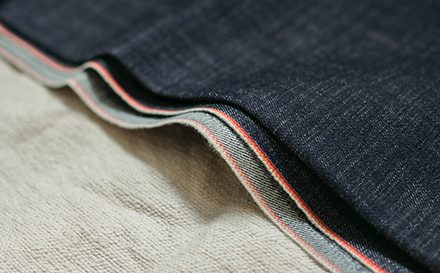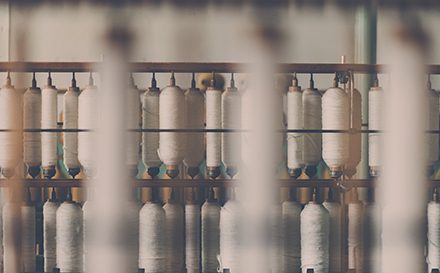Smart Keys: The challenges of traceability The - Denim Première Vision - Première Vision New York - Première Vision Paris
Let’s unpack the secrets of sustainable fabrics through our Smart Keys. At the heart of eco-design issues, our Smart Keys series question all the available solutions to help you become more informed in your materials sourcing.Today, let’s discover the challenges of traceability. In theory, knowing where and how a textile, leather or accessories component is made is a great idea. But the reality is quite different. Often, many of the processing stages and players in the value chain are scattered around the world, making traceability the Holy Grail of our time.
Transparency & traceability

Move from opacity to transparency! This is not a fashion theme but a change in the way the industry works. While traceability is compulsory in food supply chains, it is not so for textiles, leathers or components. Legally, only the composition percentages have to be displayed.
Although legislation, particularly in Europe with the due care requirement, encourages companies to find out more about the origins of their materials and show the conditions under which they are made, traceability remains a voluntary action, and is currently unregulated.
With consumers increasingly requesting more information about where and how their clothes and accessories were made, and wanting more detail than simply the “made in” country of manufacture, there needs to be a shift towards greater transparency, to encourage visibility along the entire value chain and increase trust.
Traceability is still challenged by a lack of transparency in the industry and the complexity of actually gathering the information. Without tools specifically for that purpose, retracing the chain of development is a complicated task. The many intermediaries and the multiple stages in development complexify data collection. There is also still the heritage of an opaque system that is reluctant to share information and expose how it works.
An asset for social and environmental responsibility
Traceability is a very powerful tool for allowing companies to make progress in issues of social and environmental responsibility and prove the sustainability of their products by sharing the product’s backstory.
Traceability transmits data about the various components of a product, as well as information all along the value chain. It ensures the accuracy of information such as quality, compliance with regulatory standards and the respect of social and environmental best practices.

In particular, it helps labels and participants in the supply chain to know when and to whom orders are outsourced or subcontracted, and can be used to monitor the movement of orders across the various geographical regions.
The implementation of a traceability system allows industrial partners to have access to complete and reliable data. Once the data has been gathered, transparency means giving all stakeholders access to the necessary and relevant information in order to make considered decisions.
It is in the interests of all companies to put in place a traceability system in order to meet their CSR objectives, reducing risks by examining and identifying potential problems, securing supplies and concentrating on improving practices.
Read also: Smart Key: International sustainability labels to know
How can a material be traced?

Different systems can be used to demonstrate the traceability of a product:
Segregation, the most reliable system, means that certified materials and products are physically separated from non-certified materials, during all the processing stages. In this way it can be guaranteed that no mixing of certified and uncertified products has occurred. This is how GOTS operates, for example, requiring separate chains of processing for any products seeking certification.
A mass balance, where certified and uncertified resources can be mixed. This system guarantees the volume of certified material entering the value chain, however the specific proportion of certified material in the final product is generally not supplied. This is used for complex supply chains or when the quantities are low and do not allow for the segregation of materials.
BCI cotton uses this system, with segregation occurring until the cotton is balled and the mass balance principle applied from when it is spun into yarn. It tends to be used less and less as it involves more risks. When there is a blend of materials, the conventional material does not have to be traced, and could therefore be produced under dubious agricultural conditions or using forced labour.
Traceability is evolving and requires investments in technology and processes that seek to follow products along their development, however complex the supply chain. RFID chips and QR codes were some of the first tools to be developed and are still very useful for sharing information. But they are quite easy to duplicate or falsify.
So what are the tools and keys for the creation of a reliable supply chain?
Smart Key #1: Simplify supplies
Rationalising the number of components creates a healthier and simpler base for developing traceability. Many labels these days are decreasing their ranges, simplifying the materials used, in order to concentrate on better overall management of their value chains.
Encouraging vertically-integrated suppliers, and limiting the number of partners and intermediaries will make traceability easier. Less and better, in short.

Smart Key #2: Back to the source

Today, solutions are being development to establish a supply network that is traceable from end to end, from the cotton field or the sheep to the shopfloor. This is the approach of The Sourcery, a platform seeking to ensure traceability from farmer to consumer.
A way of working together more closely, consolidating verifiable investments, which then guarantees decent agricultural practices and working conditions.
Smart Key #3: Tracing to the heart of the material
Two tools are currently very popular: blockchain and markers at the heart of the material.
Like a true digital passport, blockchain is a centralised and secure digital register, presented as being impossible to falsify, which allows information to be collected and combined as the product develops.
Crystalchain, Trustrace, Textile Genesis™ and others accompany a number of labels, suppliers and players in their efforts to authenticate operations.

A more niche technique which is currently booming, the biomarkers from Haelixa, the molecular markers from Applied DNA Science and the luminescent nanoparticles from FiberTrace® allow tracers to be placed inside the fibre that will resist the various treatments and stages in the manufacturing process. Thanks to spectrometry scanners or laboratory testing, they can reveal the information stored through this item stored inside the material.
A real asset for the leather industry is laser marking, which places a code on the surface of the material without altering it, allowing the skin to be traced from the abattoir and throughout the tanning and finishing processes.
Learn more about sustainability with our Smart Keys series:
- The hidden face of cotton
- Cellulosic materials
- The mysteries of chemistry
- Biodegradability
- Alternative plant-based materials
- Ecological and ethical accessories
- Polyester recycling
- The secrets of sports technical fabrics
- Eco-packaging
